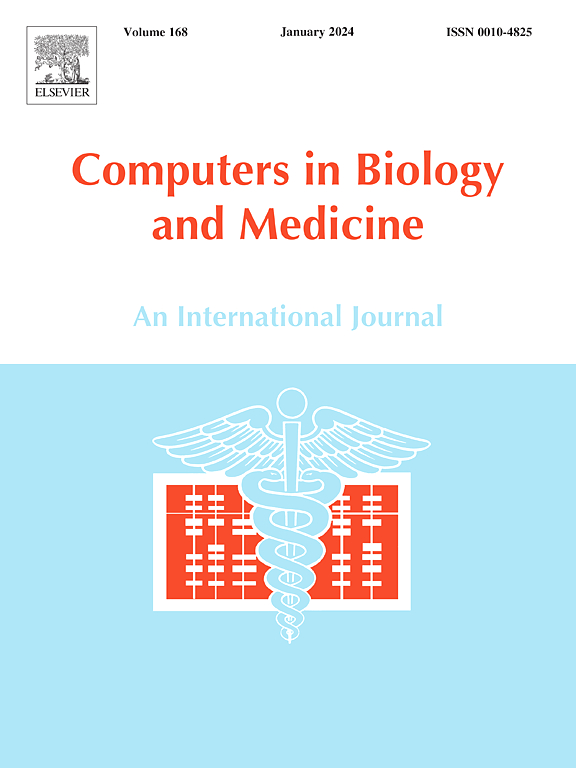人工智能通过t1加权MRI诊断阿尔茨海默病:系统综述。
IF 6.3
2区 医学
Q1 BIOLOGY
引用次数: 0
摘要
阿尔茨海默病(AD)是世界范围内痴呆症的主要原因,其特征是异质性神经病理改变和进行性认知能力下降。尽管进行了大量的研究,但除了那些旨在减缓进展和补偿损害的治疗方法之外,仍然没有有效的治疗方法。神经成像技术提供了大脑变化的全面视图,磁共振成像(MRI)由于其非侵入性和广泛可用性而起着关键作用。由于t1加权MRI序列在大多数MRI协议中普遍存在,因此经常使用,生成大型数据集,是人工智能(AI)应用的理想选择。人工智能,特别是机器学习(ML)和深度学习(DL)技术,已经越来越多地用于对这些数据集进行建模,并沿着AD连续体对个体进行分类。本系统综述评估了基于t1加权MRI数据使用AI对两个以上阶段的AD进行分类的研究。卷积神经网络(cnn)应用最为广泛,平均分类准确率达到85.93%(范围51.80- 100%,中位数87.70%)。这些良好的结果是由于cnn能够直接从原始图像数据中提取分层特征,减少了大量预处理的需要。非卷积神经网络和传统的机器学习方法也表现出了很强的性能,平均准确率分别为82.50%(范围:57.61- 99.38%;中位数:86.67%)和84.22%(范围:33- 99.10%;中位数:87.75%),强调了输入数据选择的重要性。尽管结果令人鼓舞,但挑战依然存在,包括方法异质性、过度拟合风险以及对ADNI数据库的依赖,这限制了数据集的多样性。解决这些限制对于推进人工智能在早期检测、改进分类和改善患者预后方面的临床应用至关重要。本文章由计算机程序翻译,如有差异,请以英文原文为准。
Artificial Intelligence for Alzheimer's disease diagnosis through T1-weighted MRI: A systematic review
Alzheimer's disease (AD) is a leading cause of dementia worldwide, characterized by heterogeneous neuropathological changes and progressive cognitive decline. Despite the numerous studies, there are still no effective treatments beyond those that aim to slow progression and compensate the impairment. Neuroimaging techniques provide a comprehensive view of brain changes, with magnetic resonance imaging (MRI) playing a key role due to its non-invasive nature and wide availability. The T1-weighted MRI sequence is frequently used due to its prevalence in most MRI protocols, generating large datasets, ideal for artificial intelligence (AI) applications. AI, particularly machine learning (ML) and deep learning (DL) techniques, has been increasingly utilized to model these datasets and classify individuals along the AD continuum. This systematic review evaluates studies using AI to classify more than two stages of AD based on T1-weighted MRI data. Convolutional neural networks (CNNs) are the most widely applied, achieving an average classification accuracy of 85.93 % (range: 51.80–100 %; median: 87.70 %). These good results are due to CNNs' ability to extract hierarchical features directly from raw imaging data, reducing the need for extensive preprocessing. Non-convolutional neural networks and traditional ML approaches also demonstrated strong performance, with mean accuracies of 82.50 % (range: 57.61–99.38 %; median: 86.67 %) and 84.22 % (range: 33–99.10 %; median: 87.75 %), respectively, underscoring importance of input data selection. Despite promising outcomes, challenges remain, including methodological heterogeneity, overfitting risks, and a reliance on the ADNI database, which limits dataset diversity. Addressing these limitations is critical to advancing AI's clinical application for early detection, improved classification, and enhanced patient outcomes.
求助全文
通过发布文献求助,成功后即可免费获取论文全文。
去求助
来源期刊

Computers in biology and medicine
工程技术-工程:生物医学
CiteScore
11.70
自引率
10.40%
发文量
1086
审稿时长
74 days
期刊介绍:
Computers in Biology and Medicine is an international forum for sharing groundbreaking advancements in the use of computers in bioscience and medicine. This journal serves as a medium for communicating essential research, instruction, ideas, and information regarding the rapidly evolving field of computer applications in these domains. By encouraging the exchange of knowledge, we aim to facilitate progress and innovation in the utilization of computers in biology and medicine.
 求助内容:
求助内容: 应助结果提醒方式:
应助结果提醒方式:


